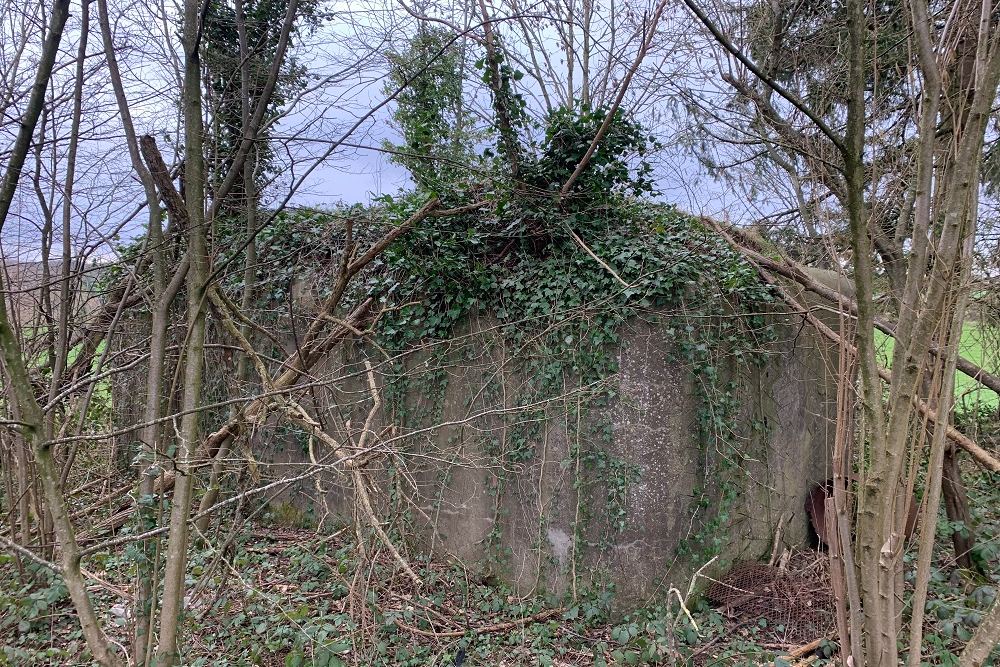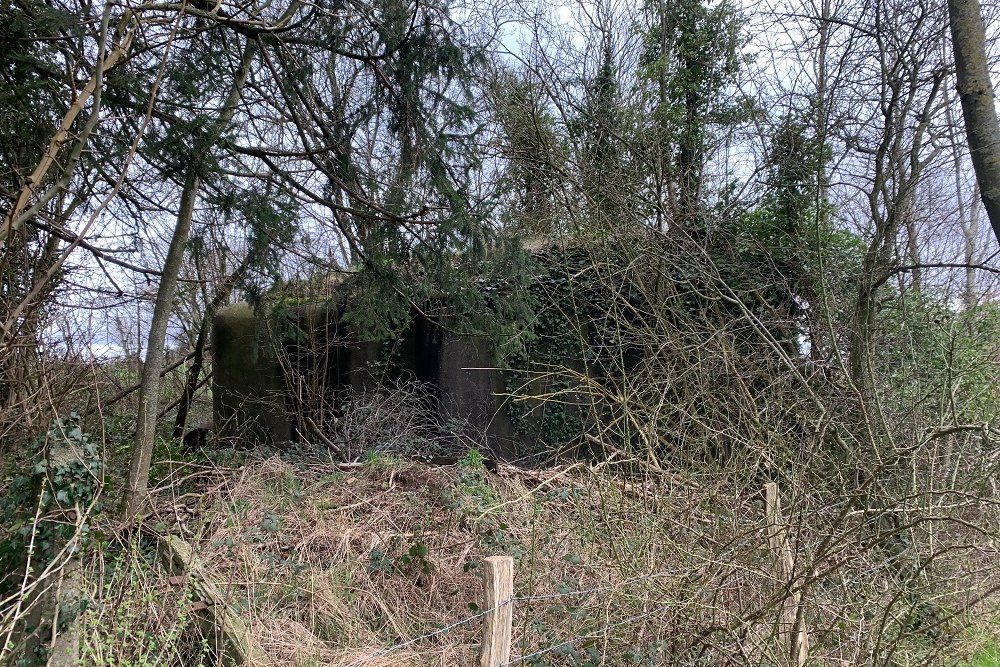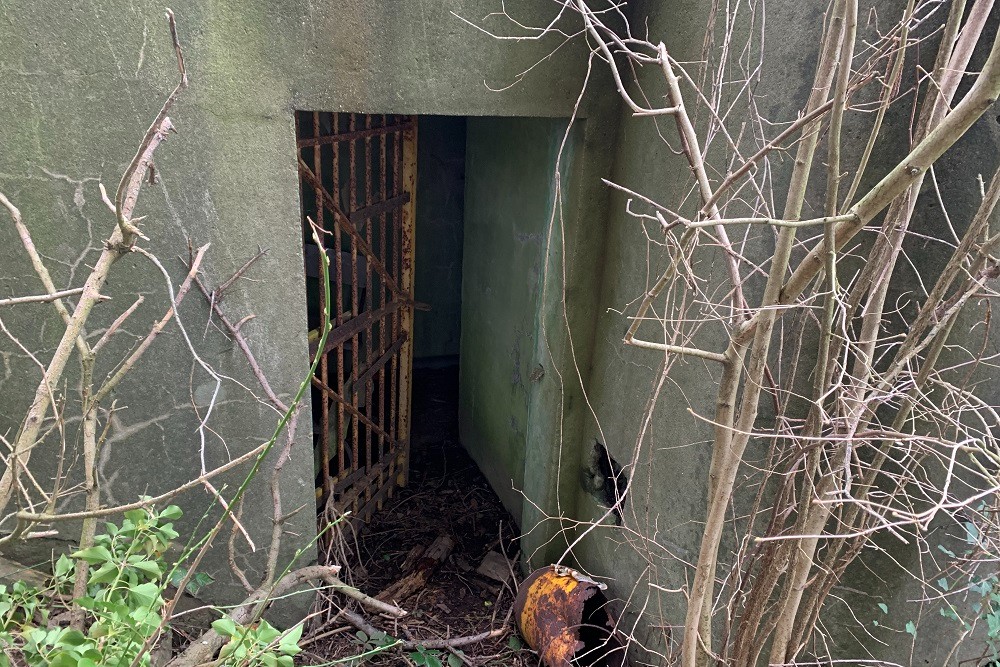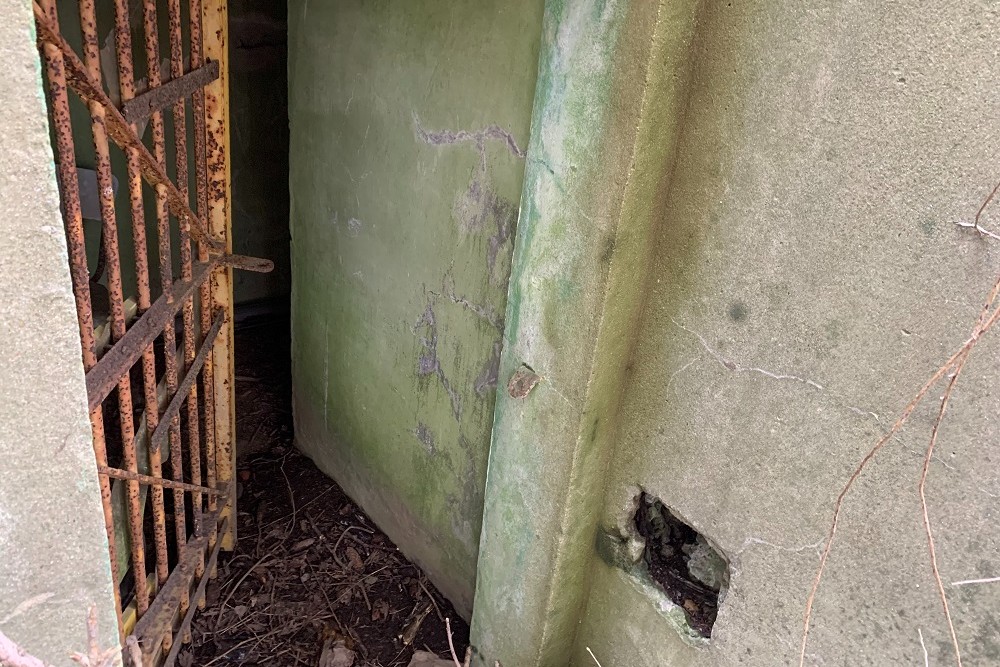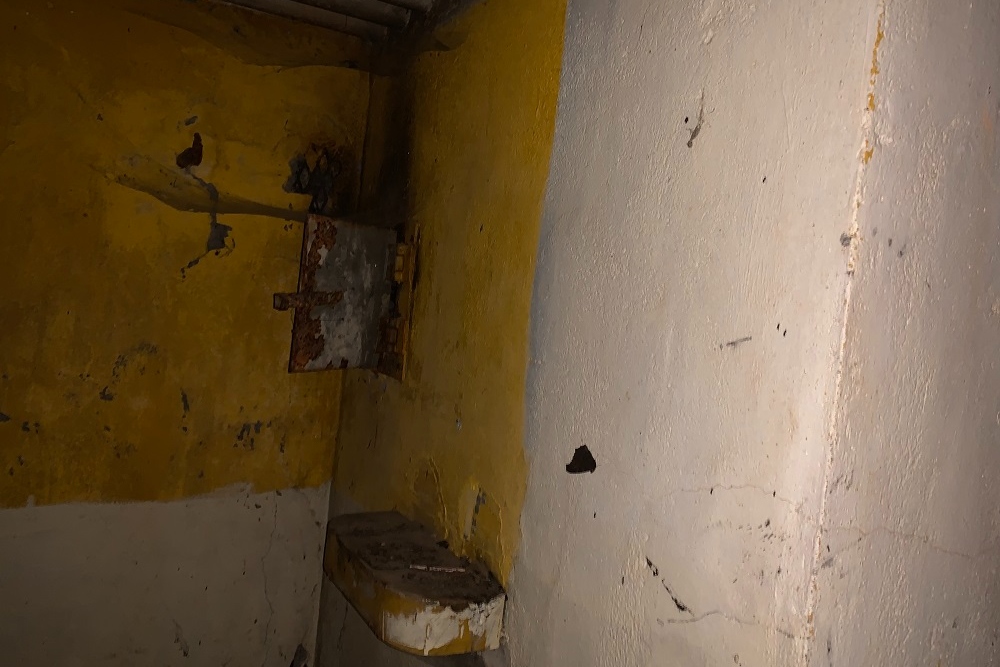Bunker SB D Becco
Bunker SB D is located 25 from the road at the edge of a meadow. The bunker belongs to sector Sougné-Becco (SB) of the 1st line of defense for the city of Liège, la Posistion Fortifiée de Liège 1, (PFL 1).
The bunker is located in a small untouched forest plot and is partially overgrown. It a smaller bunker with one gun opening for a machine gun. The bunker is accessible. The walls of the bunker are 1.3 meters thick on all sides, of reinforced concrete. Inside, it appears that the bunker has been partially painted yellow and there is a non-original wooden plate.
The bunker still has the metal mount on which the machine gun could be moved from left to right.
There are no ventilation holes present for exhaust of fumes due to machine gun salvos. For the foreseeable future, the room would be full of smoke gases, which was intoxicating to the soldiers present. The fumes were discharged through the "open doors." The original bar exterior door is still present. The lamalla interior door is gone.
The hooks on the wall were for hanging equipment. The shelf supports were meant to put away materials so people could not trip over them. It should be remembered that these (and most bunkers) were not connected to the electricity grid. A storm lamp could be hung from the ceiling, on a hook provided for that purpose. This was the only light in the bunker.
Photos 3 and 4 show a small square opening next to the entrance door. Through this opening, one could drop a hand grenade from inside for proximity defense. Photo 5 shows the access hatch in the bunker. Through this hatch one had access to the grenade gully. If enemies approached the bunker and tried to force entry, hand grenades could be used to keep the enemy out for a time.
As with most bunkers, after the war when the bunkers had lost their strategic value, the metal hatches and doors were removed and sold as scrap metal. It also happened that during the war the bunkers were stripped of iron by the Germans and melted down for other purposes. If cast-iron observation turrets were present, they were reused at the atlantikwal, among others.
Do you have more information about this location? Inform us!
Source
- Text: Ed Lewandowski
- Photos: Ed Lewandowski
Nearby
Museum
- Barracks and Museum 12e Linie Régiment Spa - Spa
- Fort de Tancrémont-Pepinster - Pepinster
- Historical Museum d’Ensival - Verviers
Point of interest
- Former German headquarters 1918 Hotel Britannique - Spa
- War Memorial Alphonse Masson - Desnié
- Chateau La Fraineuse - Spa
Monument
- War Memorial Becco - La Reid (Theux)
- War Memorial Cemetery La Reid - La Reid (Theux)
- War Memorial La Reid - La Reid (Theux)
Cemetery
- Belgian War Graves La Reid - La Reid (Theux)
- Belgian Graves Veterans La Reid - La Reid (Theux)
- Grave Unknown Maquisard La Reid - La Reid (Theux)
